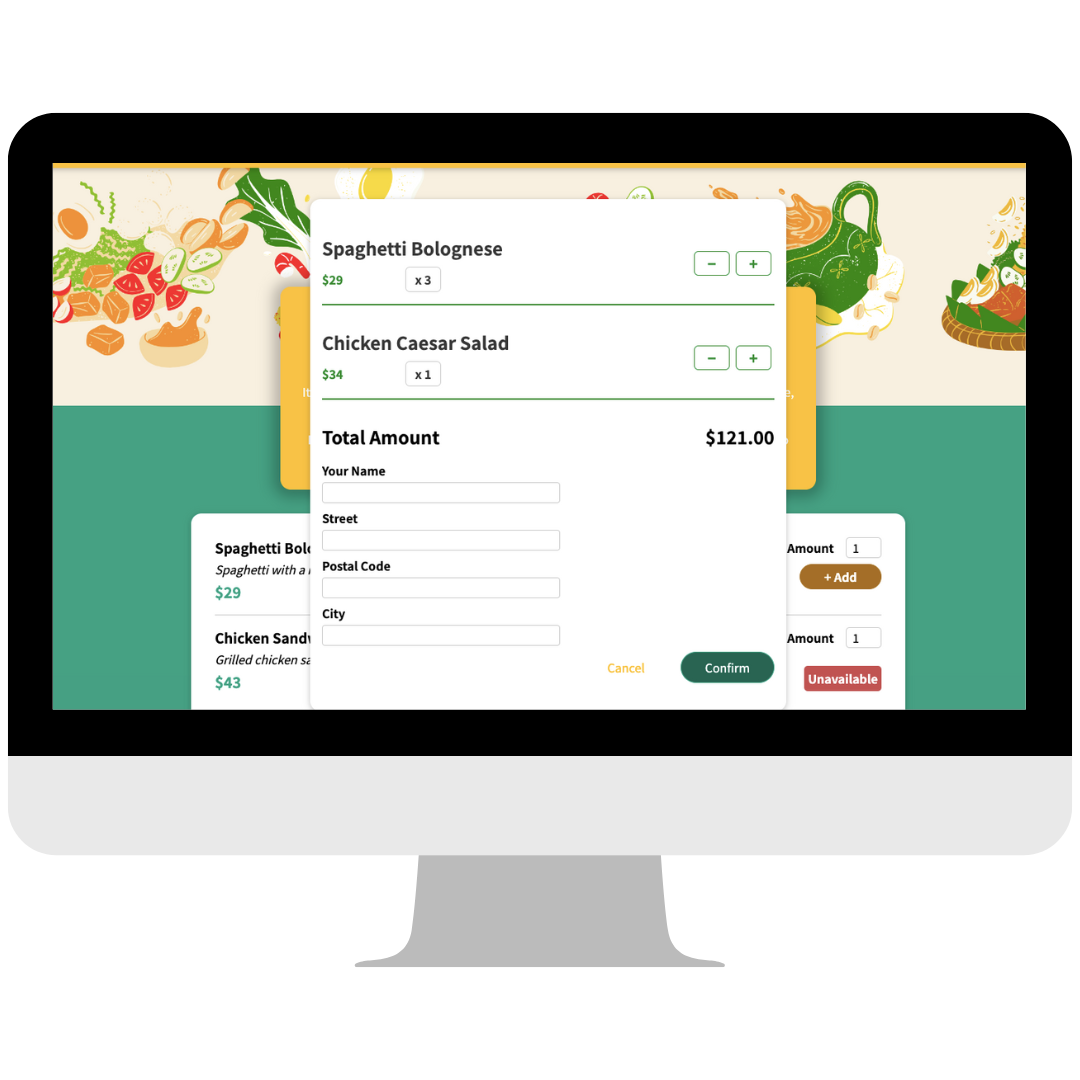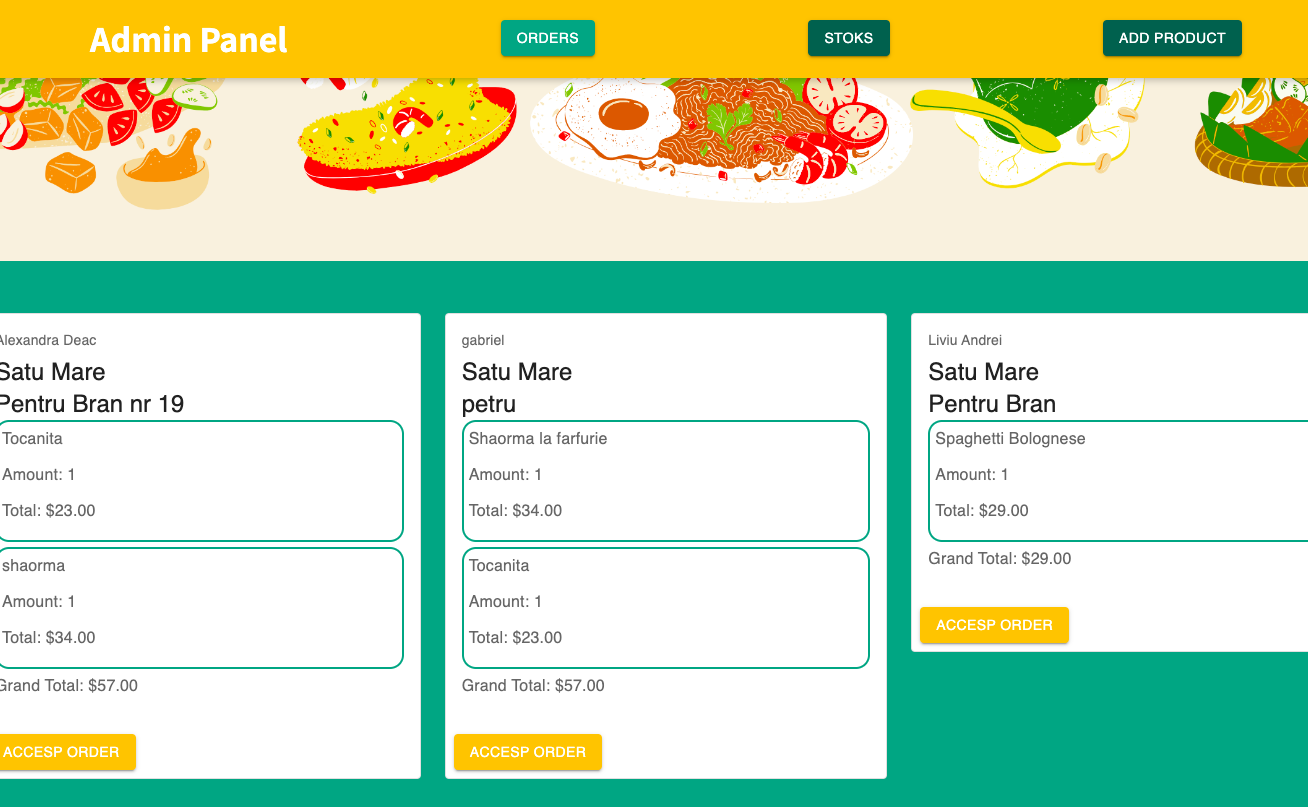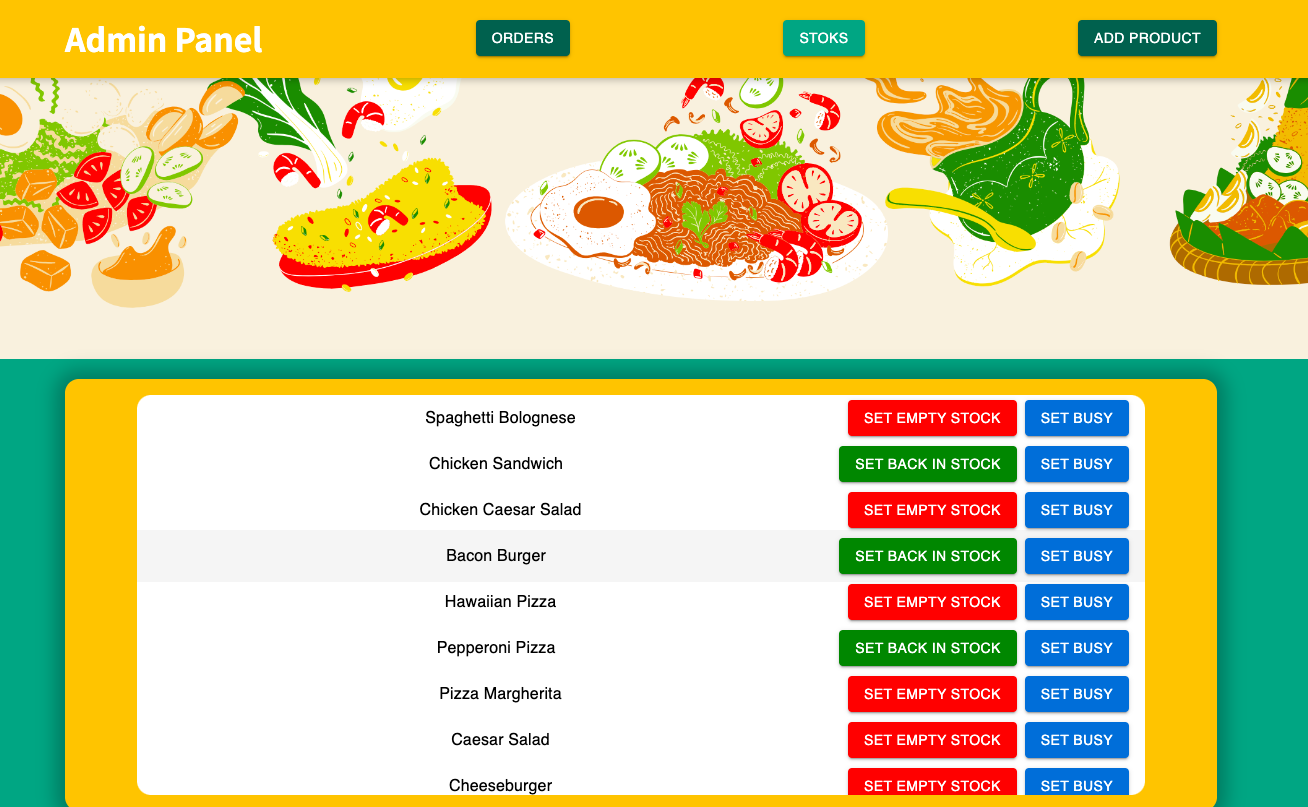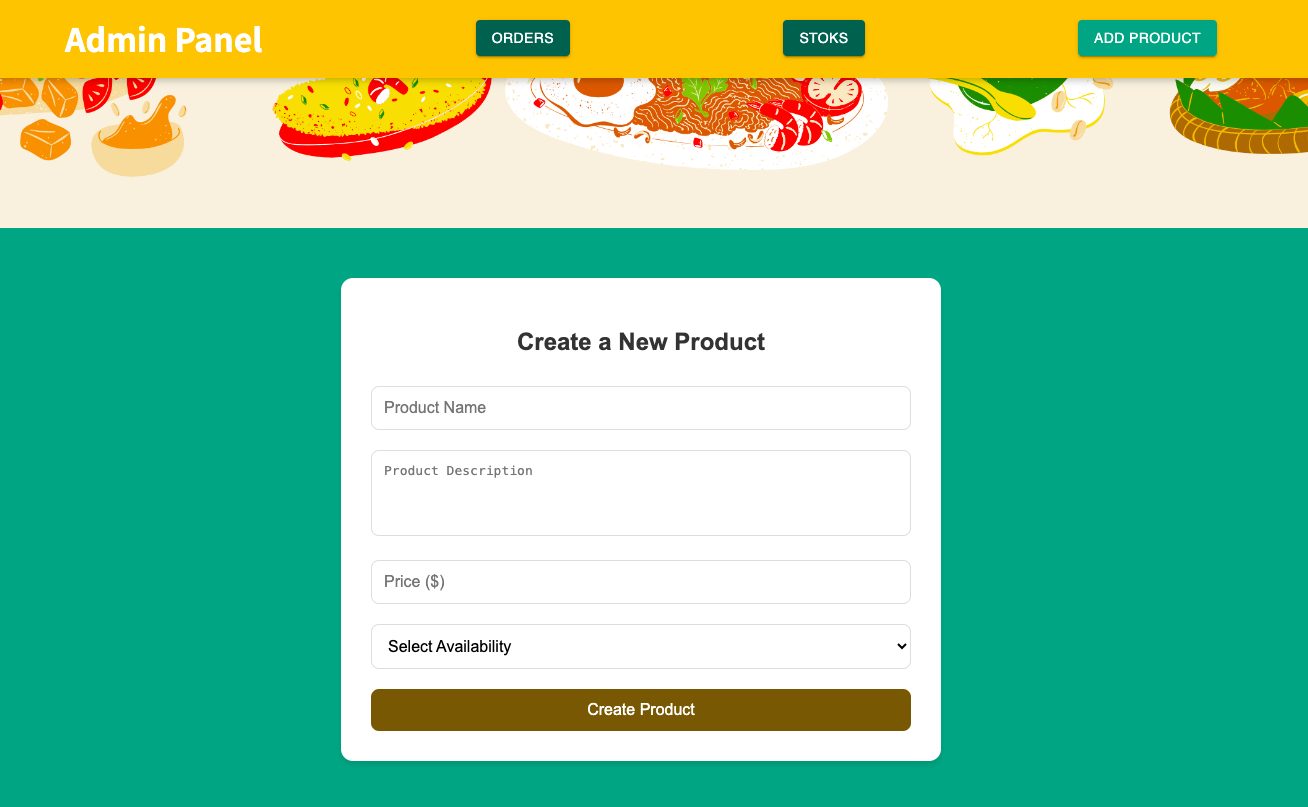Arhitecture.


Description
React Meals is a web-based food ordering application developed using React and Firebase. This application allows users to browse a menu of available meals, add items to their cart, and place orders. It also includes administrative features for managing product availability.
Key Features
- Menu Navigation and Viewing:
- Users can view a list of available meals, each with a description, price, and availability status.
- Add to Cart:
- Users can add meals to their shopping cart by specifying the desired quantity.
- The shopping cart is updated in real-time and can be viewed through a dedicated button.
- Place Orders:
- Users can place orders by filling out a form with personal and delivery details.
- Orders are saved in Firebase Realtime Database for further management.
Administrative Features:
Admins can manage products, updating their availability directly from the application interface. Administrative features are protected and accessible only to authorized users.



Technologies Used
- React: The main library used for building the user interface.
- Redux: State management to ensure a smooth and consistent user experience.
- Firebase: Used for authentication and real-time data storage.
- React Router: Manages routing and navigation within the application.
- Styled Components: Styles React components to create a modern and attractive interface.
- Material-UI: A UI component library to accelerate development and ensure design consistency.
Project Structure
Components: Contains all reusable components of the application, such as buttons, forms, and lists. Pages: Contains the main pages of the application, such as the menu page, cart page, and admin page. Store: Contains the Redux configuration and reducers for managing the application's state. Firebase: Configuration for Firebase authentication and data storage.
Redux :
import { createSlice } from '@reduxjs/toolkit';
const initialCartState = {
items: [],
meals: [],
totalAmount: 0,
isAdmin: false,
stockButton: false,
productButton: false,
orderButton: true
};
const orderSlice = createSlice({
name: 'order',
initialState: initialCartState,
reducers: {
addItem(state, action) {
const newItem = action.payload;
const existingItem = state.items.find(item => item.id === newItem.id);
state.totalAmount += newItem.price * newItem.amount;
if (!existingItem) {
state.items.push({
id: newItem.id,
name: newItem.name,
amount: newItem.amount,
price: newItem.price,
});
} else {
existingItem.amount += newItem.amount;
}
},
removeItem(state, action) {
const id = action.payload;
const existingItem = state.items.find(item => item.id === id);
state.totalAmount -= existingItem.price;
if (existingItem.amount === 1) {
state.items = state.items.filter(item => item.id !== id);
} else {
existingItem.amount--;
}
},
addMeal(state, action) {
const newMeal = action.payload;
const existingMeal = state.meals.find(meal => meal.id === newMeal.id);
if (!existingMeal) {
state.meals.push({
id: newMeal.id,
name: newMeal.name,
description: newMeal.description,
price: newMeal.price,
availability: newMeal.availability,
});
}
},
clearCart(state) {
state.items = [];
state.totalAmount = 0;
},
loginAdmin(state, action) {
state.isAdmin = action.payload;
},
setStockButton(state, action) {
state.stockButton = action.payload;
},
setProductButton(state, action) {
state.productButton = action.payload;
},
setOrderButton(state, action) {
state.orderButton = action.payload;
}
},
});
export const orderActions = orderSlice.actions;
export default orderSlice.reducer;
- The order-slice.js file defines the initial state and the reducers for managing the cart state.
- The createSlice function from Redux Toolkit is used to create a slice of the state, which includes actions and reducers.
- The initial state includes properties like items, meals, totalAmount, isAdmin, stockButton, productButton, and orderButton.
- The reducers define how the state should be updated in response to actions. For example, the addItem reducer adds a new item to the cart, and the removeItem reducer removes an item from the cart.
Configuring the Redux Store:
The index.js file in the store directory configures the Redux store using the configureStore function from Redux Toolkit. The store is configured with the orderReducer created in the order-slice.js file.
Providing the Redux Store to the Application: The index.js file in the root directory wraps the App component with the Provider component from react-redux and passes the store to it. This makes the Redux store available to all components in the application.
By using Redux for state management, the React Meals application ensures a predictable and efficient way to manage the application state. Redux helps in maintaining a single source of truth for the state, making it easier to debug and test the application. The use of Redux Toolkit simplifies the setup and reduces boilerplate code, allowing for a more streamlined development process.
